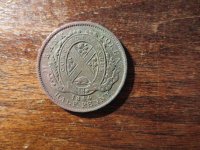Red James Cash
Banned
- Aug 20, 2009
- 12,824
- 7,899
- Detector(s) used
- Garret Master hunter Cx Plus
- Primary Interest:
- Other
Commissioner Says That NYPD Will Implement Scanners That See Through Clothes This Year .
By JG Vibes
theintelhub.com
January 28, 2012
Just a few weeks ago we reported that the TSA Viper teams were being deployed in train stations as well as bus terminals, and now it seems the technology that you may recognize from the airports is also making its way to the streets.
According to Raw Story:
“The New York Police Department will begin using scanner technology that can see through a person’s clothes within the year, according to Commissioner Ray Kelly.
“We’ve been looking at it for several years, looking at it with the Department of Defense, and also Metropolitan Police in London,” he said on CBS News’ Face the Nation.
New technology called Tera-Hertz scanners or T-Ray machines can be used to detect whether a person is carrying a concealed firearm. The new device utilizes T-rays, which pass through fabric and paper, but not cannot pass through metals.
“Basically, everyone emits Tera-Hertz radiation and if that radiation is blocked by something such as a weapon, you can see the outline of it,” Kelly explained.
“We have tested it, we just received the latest prototype and it is very encouraging. It is still to big for deployment in a reasonable way, but we are getting there. It is sort of like the cell phone was 20 years ago. So we are encouraged by that and the British are encouraged as well. We hope to be using it — at least, experimentally — in the next six months.”
One week ago if we would have claimed that the NYPD was going to be rolling out body scanners everyone would think that it was a totally insane claim. But here we are, with the NYPD announcing just that.
Watch video, courtesy of CBS, below:
NYC to deploy Tera-Hertz technology within six months - CBS News Video
By JG Vibes
theintelhub.com
January 28, 2012
Just a few weeks ago we reported that the TSA Viper teams were being deployed in train stations as well as bus terminals, and now it seems the technology that you may recognize from the airports is also making its way to the streets.
According to Raw Story:
“The New York Police Department will begin using scanner technology that can see through a person’s clothes within the year, according to Commissioner Ray Kelly.
“We’ve been looking at it for several years, looking at it with the Department of Defense, and also Metropolitan Police in London,” he said on CBS News’ Face the Nation.
New technology called Tera-Hertz scanners or T-Ray machines can be used to detect whether a person is carrying a concealed firearm. The new device utilizes T-rays, which pass through fabric and paper, but not cannot pass through metals.
“Basically, everyone emits Tera-Hertz radiation and if that radiation is blocked by something such as a weapon, you can see the outline of it,” Kelly explained.
“We have tested it, we just received the latest prototype and it is very encouraging. It is still to big for deployment in a reasonable way, but we are getting there. It is sort of like the cell phone was 20 years ago. So we are encouraged by that and the British are encouraged as well. We hope to be using it — at least, experimentally — in the next six months.”
One week ago if we would have claimed that the NYPD was going to be rolling out body scanners everyone would think that it was a totally insane claim. But here we are, with the NYPD announcing just that.
Watch video, courtesy of CBS, below:
NYC to deploy Tera-Hertz technology within six months - CBS News Video







